When it comes to the female reproductive system, it could be a very complex and sensitive issue, especially when it has an ovarian cysts disorder. These cysts have very thin walls and are filled with a fluid, and in most cases, they are benign and not dangerous. Only in 5% of the cases, do ovarian cysts have malign growths. Their appearance is quite common in women and can occur at any age.
Hemorrhagic Ovarian Cysts
Several types of ovarian cysts exist, and one of the most common is the hemorrhagic ovarian cyst, which occurs when the blood vessel in the ovarian cyst’s wall breaks and the blood starts to leak into the cyst. These type of cysts are also known as, blood cysts, hematocysts and hematoceles.

Many women never notice these cysts since they tend to appear and disappear without any treatment within one or two menstrual periods. Only in case of endometriosis, a surgery is required. Hemorrhagic ovarian cysts can be complex cysts, ruptured cysts and ovarian dermoid cysts.
Complex Ovarian Cysts
This type of hemorrhagic ovarian cyst is the most dangerous and since it can be cancerous and life threatening, it is important to treat them promptly. Complex ovarian cysts are growths on the ovarian cysts in the shape of a sac or pouch, filled with liquid or solid material. These cysts may contain hair strands or even complex ovarian septa. When the complex ovarian cysts are filled with solid substance, it is referred to as tumor, which can be granulose cell tumor, fibroma or Brenner tumor.
- The study comprised two groups of patients with complex ovarian cysts: the retrospective surgical group, which included nine patients, eight of whom underwent surgery according to the early protocol of our hospital and one of whom underwent surgery later because of clinical symptoms related to the size of the cyst; and the prospective conservative group, which included 11 consecutive newborns managed conservatively with sonographic monitoring according to our revised hospital protocol.
- Of the nine patients in surgical group, only patient 7 had symptoms (abdominal distention and vomiting) that were due to the large size of the cyst (11.2 × 6.1 cm). The remaining eight patients (89%) were asymptomatic (patients 1–6) or had gastroenteritis (patient 8) or asymmetric gluteal folds (patient 9), neither being related to the cyst. On physical examination, the cyst was palpable in patients 5 and 7. No maternal history of diabetes, toxemia, or isoimmunization had been recorded for any patient.
- The cysts were found in the right upper quadrant (two patients), right lower quadrant (five patients), left lower quadrant (one patient), and occupying both sides of the abdomen above the bladder (one patient). All specimens were soft, rounded, and yellowish or brown. A hard nodule corresponding to a calcification was present in two specimens.
- Pedicles joining the cyst to the pelvis were present in eight patients. In patient 1, the pedicle was so long that it crossed the abdomen, and the cyst, corresponding to the left ovary, was encountered in the right hemiabdomen. In patient 9, the cyst had no pedicle and was found adhering to the omentum. The left ovary was absent, and this fact established the source of the cyst. The pedicle was twisted in two patients (25%) and not twisted in six (75%).
- Radiographs revealed a mass occupying the lower half of the abdomen and displacing the intestinal loops in patient 7, a rounded mass with an internal calcification in the right hemiabdomen in patient 8, and a calcification without mass effect, in left pelvis, in patient 9).
- The 11 patients in conservative group were clinically asymptomatic. Ten were full-term neonates with normal vaginal delivery. Labor was induced in one by the attending obstetrician at 37 weeks of gestation because of discovery of the cyst. At birth, all 11 neonates were physically examined by a neonatologist and masses were palpated in three. The infants were closely followed up as outpatients by a pediatrician, and none presented clinical symptoms related to the cyst.
- Nine cystic and two solid-appearing abdominal masses were detected in the 11 patients on prenatal examination performed between 33 and 37 weeks of gestation. Sonography-guided intrauterine puncture performed on one patient yielded 26 mL of serohematic fluid.
- This study showed that complex neonatal ovarian cysts have a natural tendency to involute spontaneously and that, therefore, conservative management with clinical and sonographic monitoring would be reasonable. Nevertheless, there is still a tendency to operate early to preserve the ovary.
- Because malignancy is uncommon in newborns, the initial option of conservative treatment does not imply substantial risk. The differential diagnosis of ovarian masses in neonates is limited, with gastrointestinal tract anomalies being the main consideration. Omental cysts can bleed and thus be indistinguishable from complex ovarian cysts. An omental cyst should be considered in female neonates who have a complex cystic mass and in whom both ovaries are visualized. Ovarian tumors are so rare in infants that a hemorrhagic ovarian cyst should be considered even when the mass is echogenic. Ovarian teratoma is practically nonexistent in infants less than 1 year old. Cystic adenoma is also rare, with only two cases described in the literature
The main cause for the occurrence of complex ovarian cysts has not been established yet. However, there are several potential causes, which may be responsible for the development of complex ovarian cysts, such as ovarian cancer, metastatic cancer and hormonal imbalance. Furthermore, it is also considered that, smoking, early first menstruation, obesity and infertility contribute to the forming of this type of ovarian cysts.
Symptoms of Complex Ovarian Cysts
Complex ovarian cysts tend to grow and become large. Therefore, a very strong pain in the pelvic area is the first symptom of this condition. This pain usually spreads to the abdomen and to the thighs. Painful intercourse and pain before or after the menstruation period, as well as breast tenderness vomiting and nausea, are also some of the signs that might indicate the presence of complex ovarian cysts.





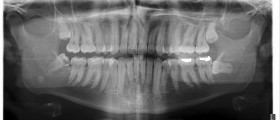
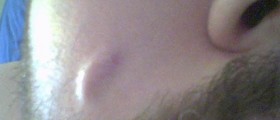

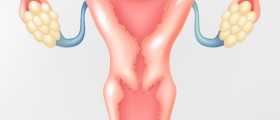


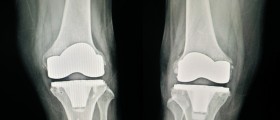
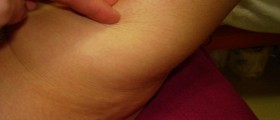


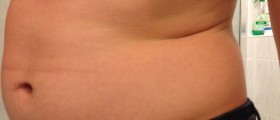

Your thoughts on this
Loading...